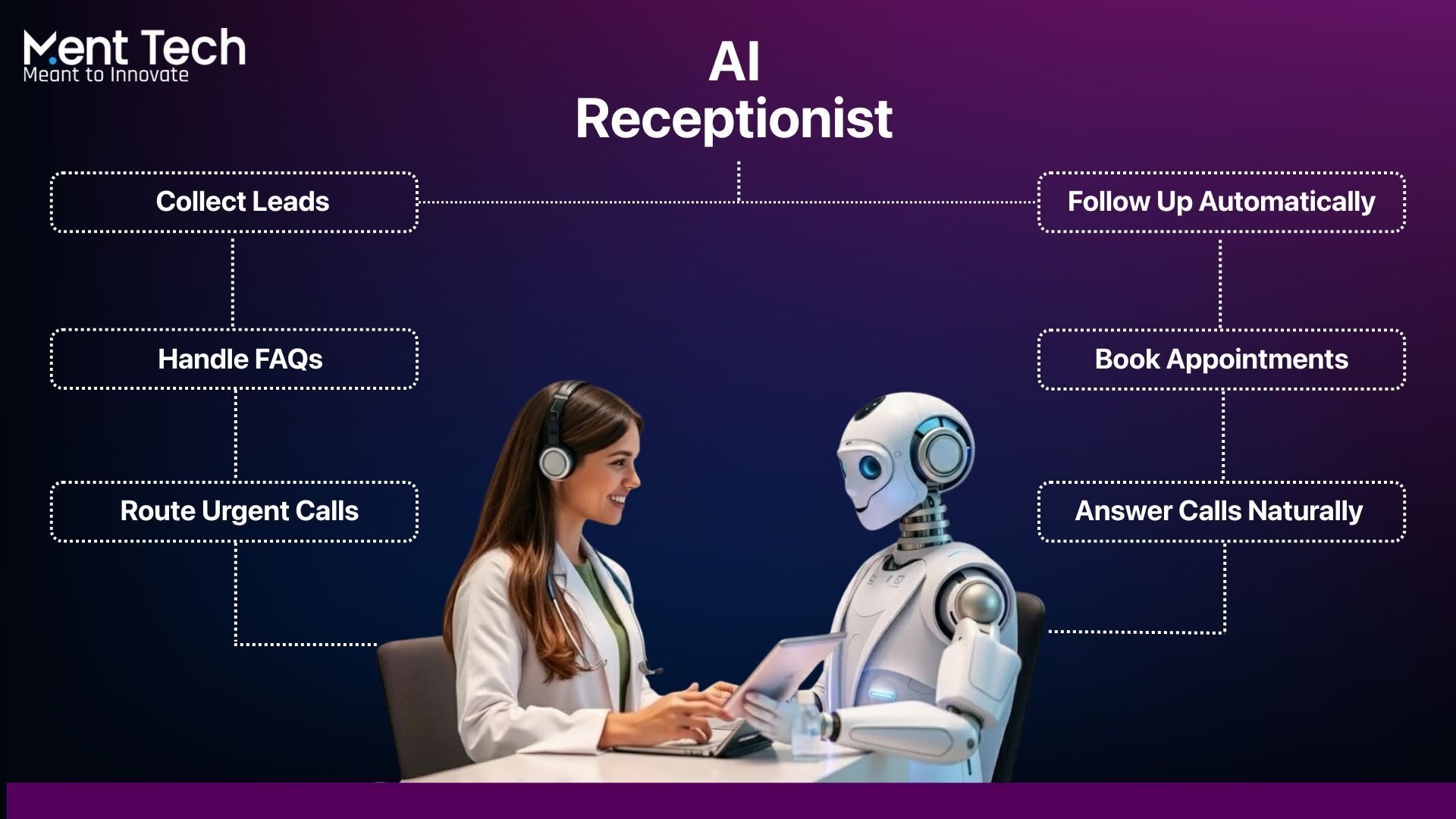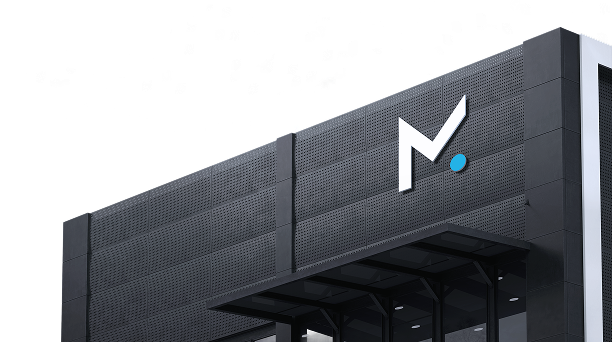The business landscape has transformed dramatically, and the numbers tell a compelling story. The AI agents market is projected to explode from $5.4 billion in 2024 to over $50 billion by 2030, with 85% of customer interactions expected to be managed without human agents by 2025. This is how businesses operate, with companies reporting up to 60% faster response times and ROI rates ranging from 300% to over 1,700% in their first year alone.
Gone are the days when businesses could afford to miss calls, lose leads after hours, or provide inconsistent customer service. Today’s customers expect instant responses, 24/7 availability, and professional interactions every single time they contact your business. Whether you’re running a small dental practice, a real estate agency, or a growing tech startup, learning how to build an AI receptionist for small businesses is not just a competitive advantage, it’s becoming essential for survival.
This comprehensive guide will walk you through everything you need to know to create your own AI receptionist system, from choosing the right platform to customizing the perfect voice for your brand.
What Exactly Is an AI Receptionist?
An AI receptionist is a smart computer program that handles phone calls, messages, and customer inquiries just like a human receptionist would but it never takes a break, never gets sick, and never forgets important information. Unlike old-fashioned phone systems that just play recorded messages, the ai virtual receptionist services for small businesses systems can actually have real conversations with your customers, understand what they’re asking for, and provide helpful responses.
Core Functions of Modern AI Receptionists:
- Answer calls naturally: Engage in human-like conversations, understand context, and respond appropriately to customer inquiries without sounding robotic.
- Book appointments: Check availability, schedule meetings directly in your calendar system, and send confirmation details to customers automatically.
- Handle FAQs: Provide instant answers to common questions about business hours, services, pricing, location, and policies without keeping customers waiting.
- Collect leads: Gather contact information, qualify potential customers, and organize prospect data directly into your CRM system for follow-up.
- Route urgent calls: Identify priority situations and immediately transfer important calls to the appropriate staff member or department.
- Follow up automatically: Send confirmation emails, appointment reminders, and follow-up messages to maintain customer engagement after the initial call.
Why Businesses Are Switching to AI Receptionists?
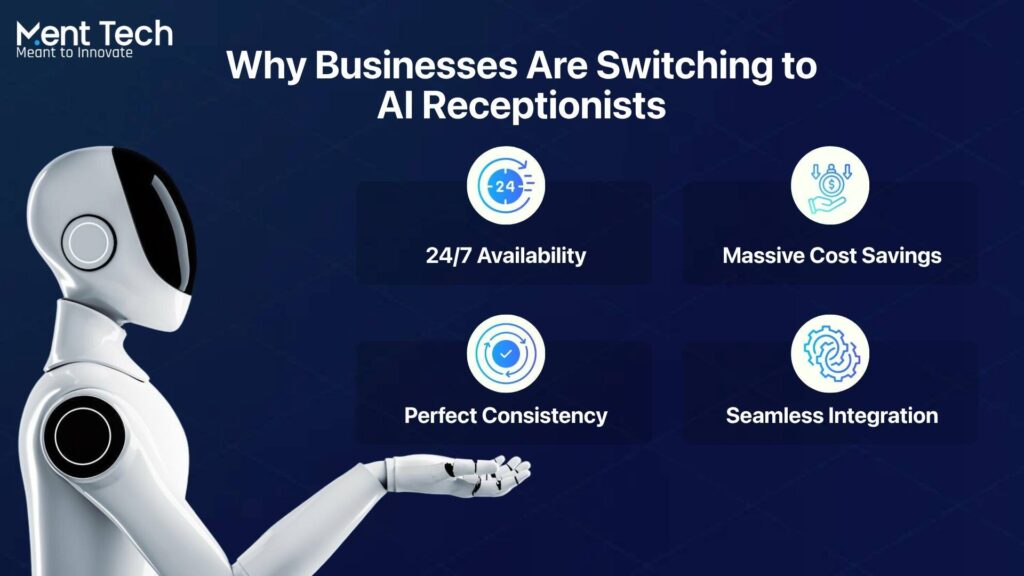
Today’s customers expect instant responses at any hour. That’s why more small businesses in the USA are replacing traditional front-desk roles with AI receptionists that deliver consistent, 24/7 service and a seamless customer experience. Below are the core factors behind this growing adoption.
1. 24/7 Availability
Your customers don’t stop having problems or questions when your office closes at 5 PM. An AI receptionist for small businesses in USA works around the clock, capturing leads and helping customers even when you’re sleeping. This is especially valuable for service-based businesses where emergency calls or after-hours inquiries can mean significant revenue.
2. Massive Cost Savings
Hiring a full-time receptionist costs most businesses $25,000 to $35,000 per year, plus benefits and training time. An affordable 24/7 AI receptionist for small business typically costs less than $200 per month while providing consistent, professional service. The math is simple: you’re saving thousands while actually improving your customer experience.
3. Perfect Consistency Every Time
Human receptionists have bad days, forget details, or might not know the answer to every question. The best AI receptionist for small business provides identical, accurate information every single time. Your pricing, availability, and business information are always delivered consistently, building trust with your customers.
4. Seamless Integration with Your Business Tools
Modern AI systems are built with AI Integration for Modern Business Infrastructure in mind. They connect to calendars, CRMs, and communication tools automatically syncing with Google Calendar, Salesforce, or HubSpot without manual data entry.
Step-by-Step: How to Build an AI Receptionist?
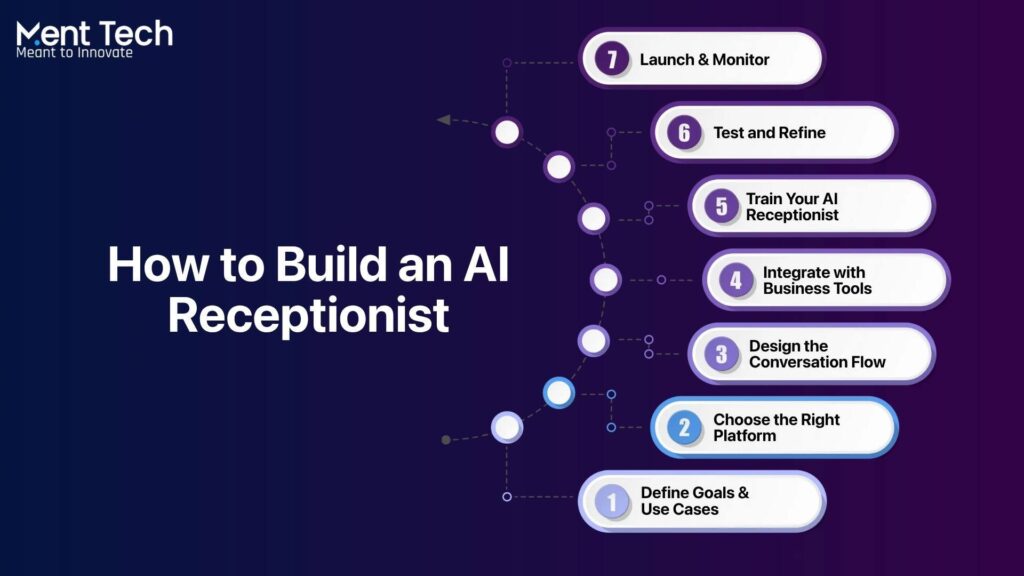
Building an AI receptionist is a structured journey that turns an idea into a fully functional customer assistant. The process moves through several key stages that define how your AI performs from day one.
Step 1: Define Your Business Goals & Use Cases
Start by identifying what tasks your AI should manage bookings, lead capture, support, or inquiries. Understanding your customer journey helps design smarter, more effective AI as a Service workflows.
Step 2: Choose the Right AI Platform
Select an AI receptionist platform based on your technical expertise and business needs. Popular options include Voiceflow for detailed conversation control, MyAI Front Desk for small businesses, Twilio for technical teams, and Smith AI Virtual Receptionist for hybrid solutions. Look for platforms offering no-code setup, seamless integration with your existing calendar and CRM systems, customizable voice options, transparent pricing, and reliable customer support to ensure smooth implementation and ongoing success.
Step 3: Design the Conversation Flow
Create a natural conversation flow that includes a friendly greeting, clear menu options for booking and inquiries, prepared responses for frequently asked questions, and smooth escalation paths to human staff when needed. Keep the tone conversational and aligned with your brand personality – whether that’s casual and friendly for a local service business or professional and formal for a law firm or medical practice.
Step 4: Integrate with Your Business Tools
Connect your AI phone receptionist for businesses to your existing systems including calendar platforms like Google Calendar or Outlook for automatic scheduling, CRM systems like HubSpot or Salesforce for lead management, your current phone system, payment processing if needed, and email/SMS tools for follow-up communications. These integrations eliminate manual data entry and ensure seamless information flow across all your business operations.
Step 5: Train Your AI Receptionist
Train your AI receptionist for busy professionals by providing comprehensive information about your services, pricing, business hours, location, common customer questions with preferred responses, staff names and roles for call routing, company policies, and brand voice guidelines. This training ensures your AI can deliver accurate, helpful responses that reflect your business expertise and maintain consistent communication standards across all customer interactions.
Step 6: Test and Refine
Thoroughly test your AI receptionist system before launch by having team members call with various scenarios including appointment bookings, complex questions, requests requiring human handoff, and integration functionality with calendars and CRM systems. This testing phase helps identify gaps, confusion points, or technical issues that need resolution to ensure smooth customer interactions from day one.
Step 7: Launch & Monitor
Start with a soft launch by directing a portion of calls to your AI initially, then monitor key metrics including call completion rates, booking conversions, average call duration, customer satisfaction scores, and human handoff frequency. Be prepared to make quick adjustments based on real customer interactions and feedback to optimize performance and ensure the system meets your business objectives effectively.

How to Customize the Voice and Personality of Your AI?
Your AI’s tone defines your brand’s personality. Either your company is playful or professional, ensure your AI receptionist for small businesses reflects that through its speech and responses.
If you’re building a modern AI system from scratch, an AI Startup Launchpad approach can help you experiment with voice, accents, and pacing before finalizing your brand tone.
- The voice and personality of your AI receptionist should feel like a genuine part of your business, not a robotic add-on. Customers should sense the same tone and warmth they’d get from a real team member.
- Think about your brand’s personality when shaping the AI’s conversational style. A children’s clinic might choose a friendly, upbeat voice, while a financial firm might prefer something calm, confident, and precise.
- Keep the tone consistent across every touchpoint so your AI always “sounds” like it belongs at your company.
- Most modern systems let you choose between multiple voices, accents, and pacing options. Take time to test and find one that matches your audience and brand character.
- If your business serves different language communities, multilingual capabilities can make a huge difference.
- Many AI receptionists today can detect a caller’s preferred language and automatically switch, offering a smoother experience for everyone.
Best Practices for a Successful AI Receptionist
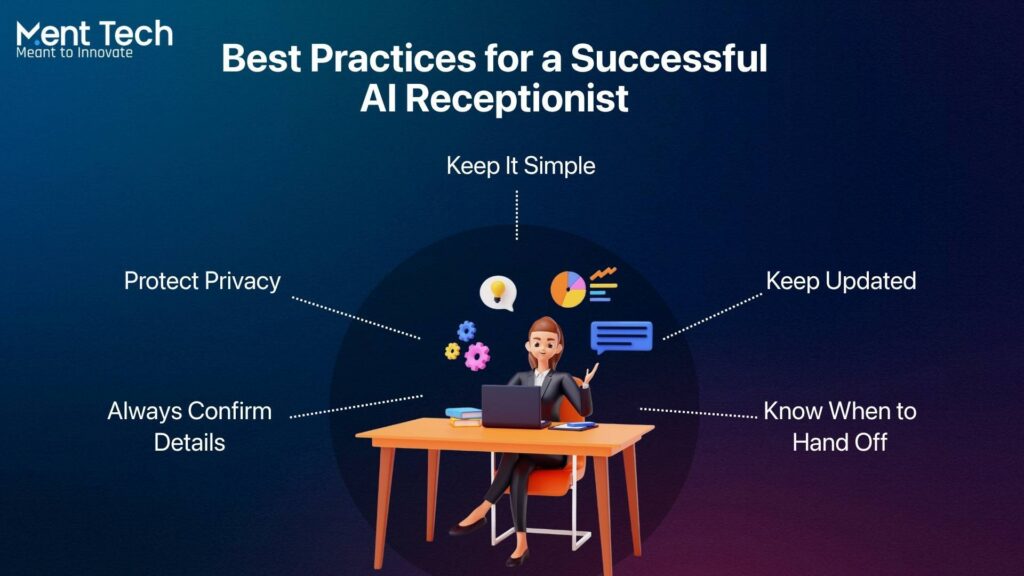
A well-designed AI receptionist can enhance every customer touchpoint. The following best practices focus on clarity, accuracy, and the right balance between automation and human support.
1. Your AI receptionist should get to the point quickly. Keep initial interactions simple and clear with a short, friendly greeting that immediately asks how it can help. Avoid long introductions or complicated menu options that slow down or confuse callers.
2. Always confirm important information when booking appointments or collecting contact details. Have your AI receptionist app repeat key details back to the customer for example, “So I have you scheduled for Tuesday, March 15th at 2 PM, is that correct?” This small step prevents mistakes and shows professionalism.
3. The best AI receptionist for small businesses knows its limits. Program clear triggers for when the AI should transfer calls to a human team member such as technical support, complaints, or complex requests that require personal judgmen
4. Regular updates and improvement are essential. As your business grows, review call recordings, update FAQs, and refresh scripts. Most AI receptionist apps offer analytics that highlight where customers get stuck or confused, making it easier to optimize performance.
5. Privacy and compliance should always be a priority. Make sure your AI receptionist system follows the latest privacy laws and industry standards especially for healthcare providers (HIPAA compliance) or companies working with European clients (GDPR compliance).
Advanced Features of AI Receptionist to Explore in 2025
In 2025, AI virtual receptionist services for small businesses have become smarter, more intuitive, and emotionally aware. Powered by Generative AI Development, modern AI receptionists can detect a caller’s tone, mood, and urgency, allowing them to adjust voice, pacing, and responses for a more natural, human-like interaction. These systems no longer just answer calls, they also manage emails, text messages, and even social media chats from a single platform, creating a seamless and unified customer support ecosystem through advanced AI Integration for Modern Business Infrastructure.
Many leading AI receptionists now include real-time analytics, providing insights on peak call times, frequently asked questions, and conversion rates. This data helps businesses refine strategies, optimize workflows, and improve customer satisfaction. Some platforms also incorporate Blockchain Solutions to secure call logs, maintain transparency, and protect sensitive customer information.
With flexible AI as a Service models, even small businesses can access enterprise-level features once reserved for large corporations. Whether scaling through an AI Startup Launchpad or choosing to Hire Top AI Developers for a fully customized voice system, these advanced capabilities are redefining business automation making every customer interaction faster, more personal, and secure.
How to Measure the ROI of Your AI Receptionist?
Evaluating the impact of your AI receptionist starts with the right data. The following metrics and insights reveal how effectively it drives efficiency, captures leads, and delivers measurable returns.
Essential KPIs to Track:
Measuring success goes beyond just counting phone calls. Track metrics that directly impact your bottom line:
- Lead capture rate: Percentage of inquiries that become qualified leads
- Appointment booking conversion: How many callers actually schedule services
- After-hours lead generation: Business captured outside normal hours
- Cost per lead: Total system cost divided by leads generated
- Customer satisfaction scores: Feedback on AI interactions
Before vs. After Analysis:
Document your baseline metrics before implementing your AI receptionist for business. Track missed calls, lead response times, and staff time spent on routine inquiries. After implementation, compare these metrics to quantify your improvement and ROI.
Hidden Cost Savings:
Don’t forget to account for indirect savings like reduced staff overtime, fewer missed opportunities, and improved customer retention due to better service consistency. These benefits often exceed the direct cost savings of the AI system itself.
How to Avoid Common Mistakes When Building an AI Receptionist?
Building an AI receptionist takes careful planning. Avoiding these common missteps will help your system perform reliably, reflect your brand, and keep customers satisfied.
- Don’t over-automate: Some calls require a real person, especially for sensitive issues, detailed complaints, or high-value clients.
- Ensure easy human access: Make sure customers can quickly reach a team member when needed.
- Listen to feedback: If users report difficulty talking to a human or unanswered questions, address it promptly.
- Avoid “set it and forget it”: Regularly update your AI receptionist with new services, pricing changes, and staff updates.
- Schedule routine check-ins: Review call logs, FAQs, and responses to keep the system accurate and helpful.
- Maintain your brand voice: Your AI receptionist should sound friendly, professional, and consistent with your company’s personality..
The Future of AI Receptionists
Building an AI receptionist for your business in 2025 is no longer a luxury but a necessity for staying competitive in today’s market. With businesses seeing ROI from 300% to over 1,700% in the first year and capturing 40% more leads while reducing response times by 60%, the benefits are clear and immediate. The technology has matured to the point where setup is straightforward, costs are affordable, and the results speak for themselves.
Whether you partner with an experienced AI Development Company or use established platforms, the investment in AI receptionist technology will transform your customer service operations and position your business for sustained growth in an increasingly competitive marketplace.
Final Thoughts
A virtual receptionist can make everyday business communication smoother, faster, and more reliable. It helps teams focus on real work instead of routine calls, keeps customers engaged, and ensures no lead slips through the cracks. With the right setup, it’s not just about saving costs, it’s about creating a better, more consistent experience for every customer who reaches out.
At Ment Tech, we help businesses implement AI Integration for Modern Business Infrastructure that truly fits their brand and workflow. From voice setup to system integration, our team makes sure everything works seamlessly and feels natural to your customers. If you’re looking to build your own intelligent receptionist system, connect with Ment Tech’s AI developers to bring it to life.
Frequently Asked Questions
The cost to build an AI receptionist varies significantly based on your business needs and chosen platform. Basic AI receptionist services start around $50-100 per month for small businesses with simple requirements, while more advanced systems with custom integrations can range from $200-500 monthly.
Modern AI receptionist technology has advanced dramatically, with the best systems producing conversations that are virtually indistinguishable from human interactions. Current AI platforms offer multiple voice options, natural speech patterns, and the ability to understand context and respond appropriately to unexpected questions.
Professional AI receptionist systems are designed with smart escalation protocols that seamlessly transfer customers to human staff when the AI encounters questions it cannot handle confidently. The best practice is to program your AI to recognize its limitations and say something like “Let me connect you with someone who can help with that specific question” rather than guessing or providing incorrect information.
Most businesses can have a basic AI receptionist system operational within 1-2 weeks using modern no-code platforms, while more complex implementations with extensive integrations might take 4-6 weeks.
Modern AI receptionist technology has advanced dramatically, with the best systems producing conversations that are virtually indistinguishable from human interactions. Current AI platforms offer multiple voice options, natural speech patterns, and the ability to understand context and respond appropriately to unexpected questions.
Reputable AI receptionist providers implement enterprise-level security measures including data encryption, secure cloud storage, regular security audits, and compliance with regulations like GDPR and HIPAA where applicable.
Yes, modern AI receptionist platforms offer extensive integration capabilities with popular business tools including Google Calendar, Outlook, Salesforce, HubSpot, QuickBooks, and most major CRM systems.
